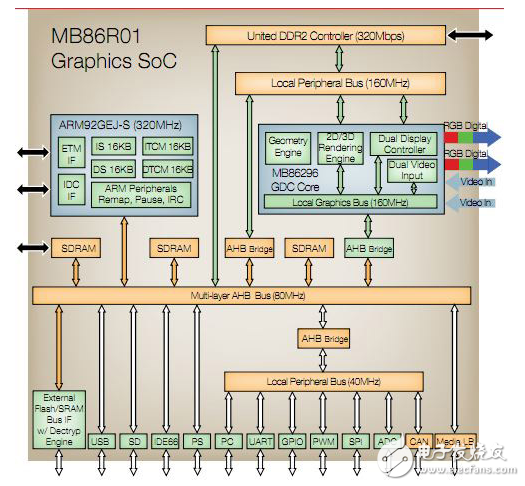
资料下载

控制人机界面
控制人机界面
微控制器是人机界面的核心,将传感器数据转换成命令。从工艺技术和系统结构上提高性能,使微控制器和FPGA能够通过硬件引擎或软件库处理更多的图形和音频,并在工业环境中提供更丰富的接口。
微控制器越来越集成和降低成本,正推动这项技术进一步控制工业设计中的人机界面。集成LCD控制器和更高性能数字信号处理的能力,使显着更复杂的显示器,包括3D图形,以实现和显示,同时保持尽可能低的成本和功耗。添加其他功能,如触摸屏控制器和通信模块,允许更进一步的集成,使接口控制器成为系统中的关键元素。
臂产生了一个新的处理器内核生成,如Cortex-M3和Cortex-M4,有显着更高水平的性能和DSP的支持,使一类新的微控制器来处理广泛的接口函数。

However, there are other ways to tackle the challenges. Existing cores can be supplemented with dedicated graphics hardware to make the most of existing software, while using field programmable gate arrays can provide either dedicated hardware or an optimized microcontroller, both combined with the technology to drive the displays.
Freescale Semiconductor’s Kinetis K40 is a microcontroller aimed directly at industrial human interface designs. It has a hardware touch-sensing interface, with up to 16 inputs, that avoids software polling method and a flexible, low-power LCD controller that supports up to 320 segments (40 x 8 or 44 x 4)。 The LCD blink mode enables low average power while remaining in low-power mode while a segment fail detection block guards against erroneous readouts and reduces LCD test costs.
The segment LCD controller supports up to 40 frontplanes and eight backplanes, or 44 frontplanes and four backplanes, all of which are configurable in software to avoid a costly re-design of the display equipment.
声明:本文内容及配图由入驻作者撰写或者入驻合作网站授权转载。文章观点仅代表作者本人,不代表电子发烧友网立场。文章及其配图仅供工程师学习之用,如有内容侵权或者其他违规问题,请联系本站处理。 举报投诉
- 相关下载
- 相关文章






